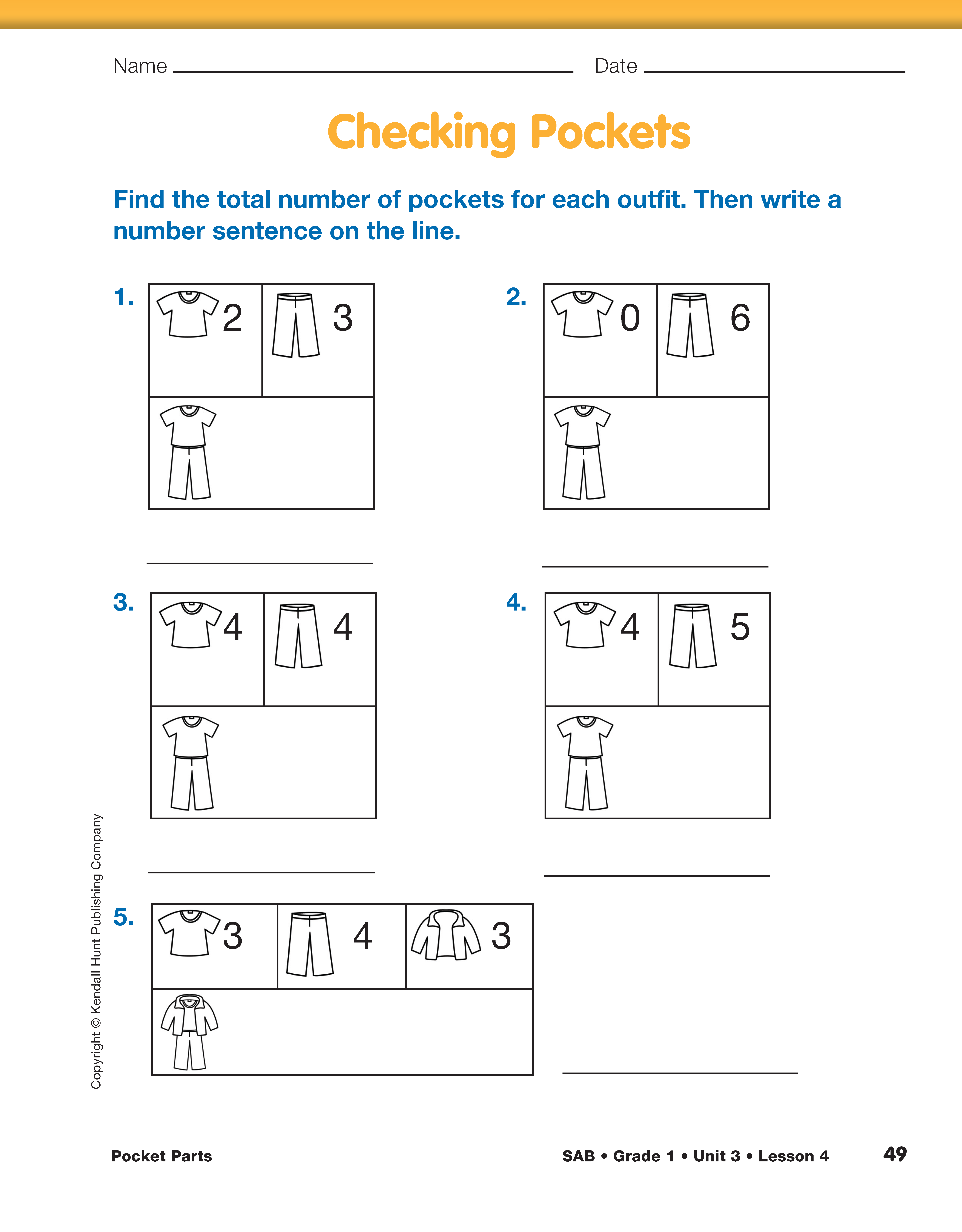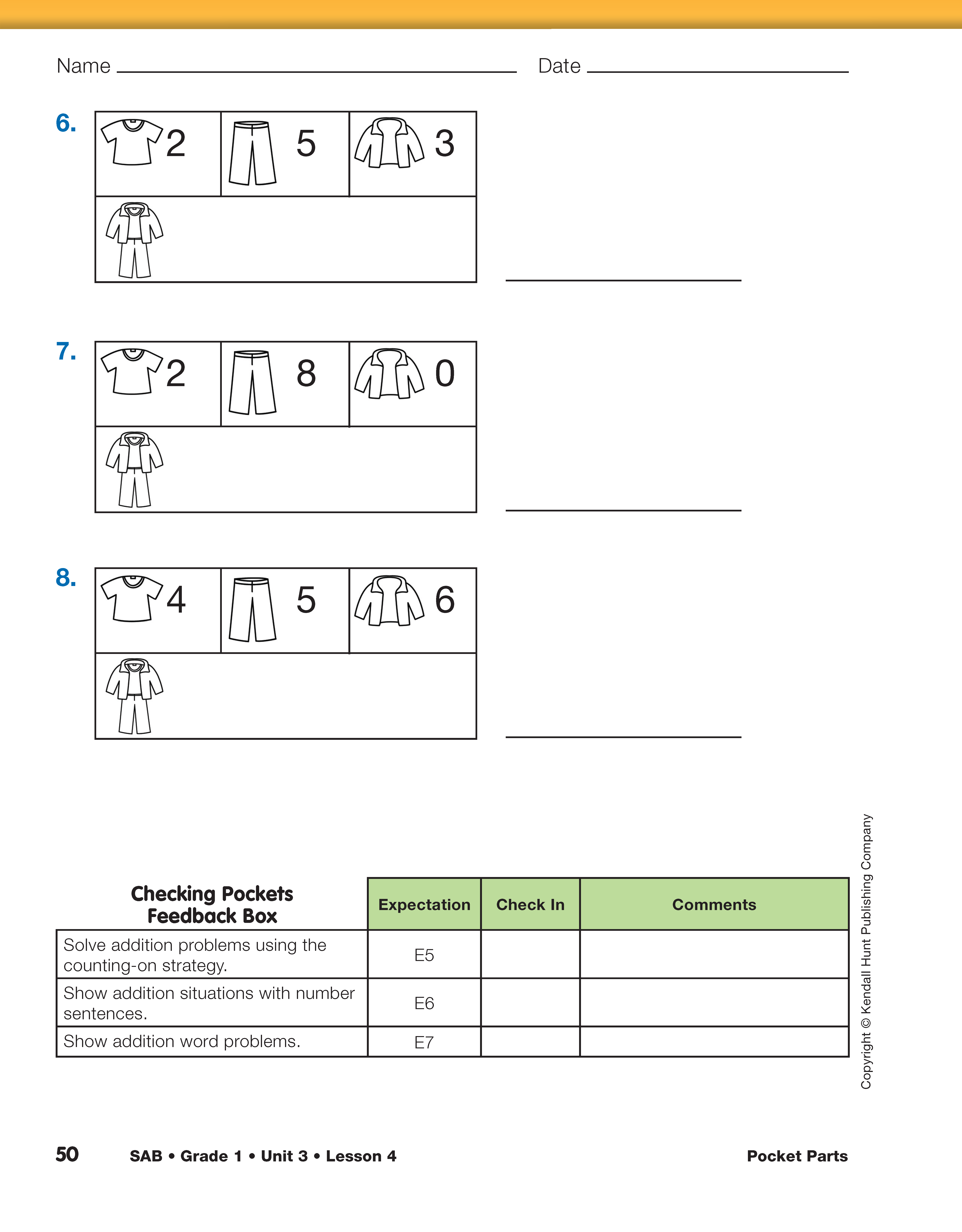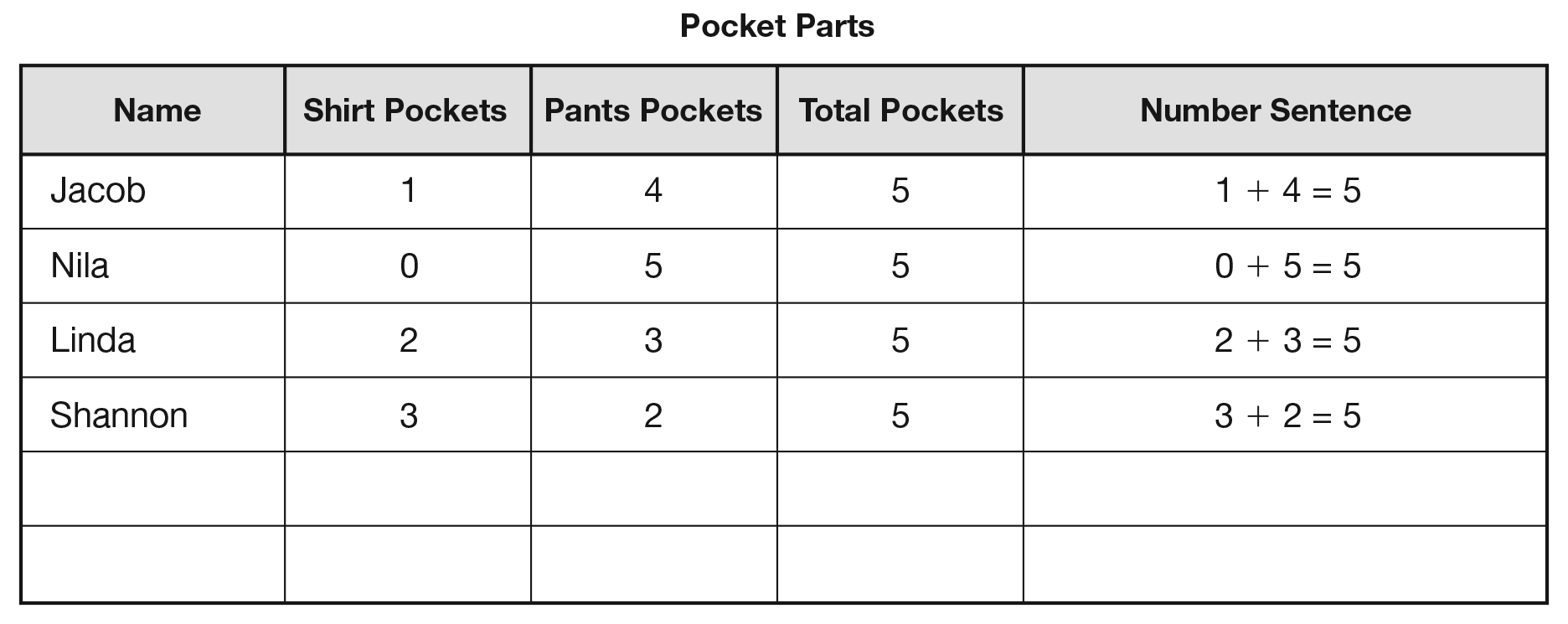Pocket Parts
Est. Class Sessions: 2Summarizing the Lesson
Ask students to reflect on the work in this lesson in which they used shirt, pants, and coat pockets to discover the part-whole relationship of numbers. Choose a total number of pockets to study, such as five. Ask all students who have a total of five pockets to stand and to make cube trains, as at the start of the lesson, using one color to represent the number of shirt pockets and a second color to represent the number of pants pockets. Ask each student to represent his or her total number of pockets by joining the two trains. Have each student explain how many shirt pockets, pants pockets, and total pockets he or she has. Use a display of the Pocket Parts Table Master or the display you prepared to record this information showing the different combinations that make five. See Figure 3. Elicit other combinations from the class if all possible combinations of five have not been represented. Point out and discuss turn-around facts. See the TIMS Tip.
Repeat this discussion with a different number of total pockets. Ask students to identify turn-around facts.
Ask students to think about the strategies and tools they used to solve problems throughout the lesson. Illustrate problems as appropriate.
Use discussion prompts similar to the following:
Provide time for students to complete the Checking Pockets pages in the Student Activity Book.

















